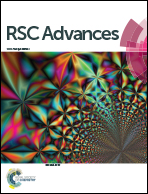A new method to determine the new C-Met inhibitor “Cabozantinib” in dosage form and human plasma via micelle-enhanced spectrofluorimetry
Abstract
A highly sensitive and simple micelle-enhanced spectrofluorimetric method was developed for the determination of cabozantinib (CBZ) in its pharmaceutical formulation and spiked human plasma without any derivatization. The proposed method is based on the investigation of the fluorescence spectral behavior of CBZ in a Cremophor RH 40 (Cr RH 40) micellar system. In aqueous solution, the fluorescence intensity of CBZ was greatly enhanced (nine fold) in the presence of Cr RH 40. The fluorescence intensity was measured at 343 nm after excitation at 244 nm. The fluorescence–concentration plot was linear over the range 25–800 ng mL−1, with a lower detection limit of 13.34 ng mL−1. The proposed method was successfully applied to the determination of CBZ in laboratory-prepared dosage form and spiked human plasma. Recovery values of CBZ with the current method were 99.68 ± 0.88, 100.53 ± 0.51 and 100.44 ± 3.91% for pure powder, lab-prepared dosage form and spiked human plasma, respectively. The results were statistically compared with those obtained by the reported chromatographic method and were found to be in good agreement.


 Please wait while we load your content...
Please wait while we load your content...